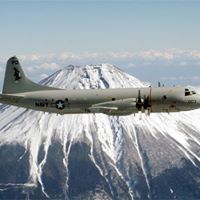Lawrence E Ames
age ~76
from Roseville, CA
- Also known as:
-
- Lawrence Edward Ames
- Larry E Ames
- Larry Ames Ames
- Jason Ames
Lawrence Ames Phones & Addresses
- Roseville, CA
- Colorado Springs, CO
- Cedar Park, TX
- Dublin, CA
- Hayward, CA
- San Leandro, CA
- Reno, NV
- Santa Ana, CA
- San Diego, CA
- Concord, CA
- Sparks, NV
Work
-
Company:Golden west specialty foods
-
Address:1201 Montgomery Ave, San Bruno, CA 94066
-
Phones:6505539327
-
Position:Owner
-
Industries:Canned Fruits, Vegetables, Preserves, Jams, and Jellies
Resumes

Lawrence Ames
view source
Lawrence Ames
view sourceLocation:
United States

Biomedical Engineer At Mercy Hospital Of Folsom
view sourceLocation:
Sacramento, California Area
Industry:
Hospital & Health Care

Lawrence Ames
view sourceLocation:
United States

Lawrence Ames
view sourceLocation:
United States
Name / Title
Company / Classification
Phones & Addresses
Owner
Golden West Specialty Foods
Canned Fruits, Vegetables, Preserves, Jams, a...
Canned Fruits, Vegetables, Preserves, Jams, a...
1201 Montgomery Ave, San Bruno, CA 94066
CEO
Ames Fine Foods, Inc
Food Preparations
Food Preparations
1276 Montgomery Ave. - San Bruno, Redwood City, CA 94065
President
Golden West Specialty Foods
Shortening, Table Oils, Margarine, and Other ...
Shortening, Table Oils, Margarine, and Other ...
1201 Montgomery Ave, San Bruno, CA 94066
Website: honestfoods.com
Website: honestfoods.com
President, Owner
Golden West Specialty Foods
Consumer Goods · Fruit and Vegetable Canning
Consumer Goods · Fruit and Vegetable Canning
1201 Montgomery Ave, San Bruno, CA 94066
6505539327, 6505539423
6505539327, 6505539423
Partner
Ames & Co
Custodian of Securities
Custodian of Securities
1800 Madison St, Oakland, CA 94612
221 El Cerrito Ave, Oakland, CA 94611
PO Box 11277, Oakland, CA 94611
5106522406
221 El Cerrito Ave, Oakland, CA 94611
PO Box 11277, Oakland, CA 94611
5106522406
President, Owner
AMES FINE FOODS INC
Food Manufacturer/Distribution · Direct Retail Sales
Food Manufacturer/Distribution · Direct Retail Sales
300 Industrial Way, Brisbane, CA 94005
1201 Montgomery Ave, San Bruno, CA 94066
4156570123, 4155539423
1201 Montgomery Ave, San Bruno, CA 94066
4156570123, 4155539423
Principal
Glen Willow Neighborhood Association
Membership Organization
Membership Organization
PO Box 7706, San Jose, CA 95150
1007 Spencer Ave, San Jose, CA 95125
1007 Spencer Ave, San Jose, CA 95125
Us Patents
-
Off-Axis Reflective Optical Apparatus
view source -
US Patent:6902326, Jun 7, 2005
-
Filed:Jan 22, 2003
-
Appl. No.:10/349758
-
Inventors:Lawrence L. Ames - San Jose CA, US
David F. Leary - Palo Alto CA, US
Paul V. Mammini - Rocklin CA, US -
Assignee:Lockheed Martin Corporation - Bethesda MD
-
International Classification:G02B006/38
-
US Classification:385 60, 385 72, 385 78
-
Abstract:Embodiments of the present invention are directed to a simple apparatus and a convenient and accurate method of mounting the components to form an off-axis reflective optical apparatus such as a collimator. In one embodiment, an off-axis reflective optical apparatus comprises a mounting block having a ferrule holder support surface and an off-axis reflector support surface which is generally perpendicular to the ferrule holder support surface. An optical reflector is mounted on the off-axis reflector support surface and has a reflected beam centerline. The optical reflector has a conic reflective surface and a conic center. A ferrule holder is mounted on the ferrule holder support surface. The ferrule holder provides a ferrule for coupling to an optical fiber and orienting a fiber tip of the optical fiber along a fiber axis toward the optical reflector. The fiber axis is nonparallel to the reflected beam centerline. Prior to mounting the optical reflector to the off-axis reflector support surface and prior to mounting the ferrule holder to the ferrule holder support surface, the optical reflector is movable on the off-axis reflector surface and the ferrule holder is movable on the ferrule holder support surface to align the conic center of the optical reflector with respect to the fiber tip of the optical fiber, and the apparatus has at least one of the following features: (1) the optical reflector is movable on the off-axis reflector support surface to adjust a focus of the fiber tip with respect to the optical reflector, and (2) the ferrule holder is movable on the ferrule holder support surface to adjust the focus of the fiber tip with respect to the optical reflector.
-
Beam Masking To Reduce Cyclic Error In Beam Launcher Of Interferometer
view source -
US Patent:6922249, Jul 26, 2005
-
Filed:Nov 12, 2002
-
Appl. No.:10/293209
-
Inventors:Lawrence L. Ames - San Jose CA, US
Raymond Mark Bell - Redwood City CA, US
Kalyan Dutta - Santa Clara CA, US -
Assignee:Lockheed Martin Corporation - Bethesda MD
-
International Classification:G01B009/02
-
US Classification:356496
-
Abstract:Embodiments of the present invention are directed to reducing cyclic error in the beam launcher of an interferometer. In one embodiment, an interferometry apparatus comprises a reference beam directed along a reference path, and a measurement beam spatially separated from the reference beam and being directed along a measurement path contacting a measurement object. The reference beam and the measurement beam have a single frequency. At least a portion of the reference beam and at least a portion of the measurement beam overlapping along a common path. One or more masks are disposed in the common path or in the reference path and the measurement path to spatially isolate the reference beam and the measurement beam from one another.
-
Robust Heterodyne Interferometer Optical Gauge
view source -
US Patent:6947621, Sep 20, 2005
-
Filed:Jan 22, 2002
-
Appl. No.:10/051122
-
Inventors:Patrick Elliott Perkins - Sunnyvale CA, US
Lawrence Lowell Ames - San Jose CA, US
William Walter Anderson - Half Moon Bay CA, US -
Assignee:Lockheed Martin Corporation - Bethesda MD
-
International Classification:G02B006/00
G02B006/26
G02B006/36 -
US Classification:385 15, 385147
-
Abstract:A method for performing optical signal and beam distribution in a heterodyne interferometer. A planar lightwave circuit is provided including a plurality of waveguide optical transmission elements and an input coupler and an output coupler arranged along the optical transmission elements. Optical pathlengths of the transmission elements are matched between the input coupler and the output coupler to compensate for thermal effects. Reference and measurement optical phases are determined employing the input coupler and the output coupler.
-
Waveguide-Based Optical Interferometer
view source -
US Patent:7003186, Feb 21, 2006
-
Filed:Oct 6, 2003
-
Appl. No.:10/680720
-
Inventors:Patrick Elliott Perkins - Sunnyvale CA, US
Lawrence Lowell Ames - San Jose CA, US
William Walter Anderson - Half Moon Bay CA, US -
Assignee:Lockheed Martin Corporation - Bethesda MD
-
International Classification:C02B 6/26
G01B 9/02 -
US Classification:385 15, 356482
-
Abstract:Techniques for measuring spatial locations. An apparatus for measuring spatial locations includes a first object at a first location, a second object at a second location, and a waveguide-based interferometer coupled between the first object and the second object. The waveguide-based interferometer includes a waveguide material. The waveguide material is adapted to carry at least a reference beam and a measurement beam. The reference beam traverses a first path defined within the waveguide material. The measurement beam traverses a second path defined within the waveguide material and a third path defined outside of the waveguide material. The third path is related to at least one of the first location and the second location.
-
Symmetric Periscope For Concentric Beam Configuration In An Ultra-High Precision Laser Interferometric Beam Launcher
view source -
US Patent:7009708, Mar 7, 2006
-
Filed:Feb 25, 2004
-
Appl. No.:10/787662
-
Inventors:Lawrence L. Ames - San Jose CA, US
-
Assignee:Lockheed Martin Corporation - Bethesda MD
-
International Classification:G01B 9/02
-
US Classification:356484, 356450, 356498
-
Abstract:An optical component especially suited for common path heterodyne interferometry comprises a symmetric dual-periscope configuration. Each periscope is substantially identical to the other with regard to certain design aspects. The resulting design is an optical component that is highly stable with variations in temperature and angular deviations.
-
Apodization Of Beams In An Optical Interferometer
view source -
US Patent:7095504, Aug 22, 2006
-
Filed:Feb 25, 2004
-
Appl. No.:10/788166
-
Inventors:Lawrence L. Ames - San Jose CA, US
Kalyan Dutta - Los Altos Hills CA, US -
Assignee:Lockheed Martin Corporation - Bethesda MD
-
International Classification:G01B 9/02
-
US Classification:356498, 356486
-
Abstract:An interferometry apparatus comprises one or more beam generators, a detector, and a plurality of optical paths along which one or more beams of light propagate. Disposed along at least one of the optical paths is an apodization mask to shape one of the beams.
-
Determination Of Wind Velocity Using A Non-Vertical Lidar Scan
view source -
US Patent:57241252, Mar 3, 1998
-
Filed:Jun 22, 1994
-
Appl. No.:8/263820
-
Inventors:Lawrence L. Ames - San Jose CA
-
International Classification:G01P 336
G01S 1358 -
US Classification:356 285
-
Abstract:A system and method for determining wind velocity. The LIDAR 104 transmits a plurality of laser pulses. The paths of the laser pulses surround a center line (206) that does not coincide with a vertical axis (706) intersecting the LIDAR (104), i. e. , an off-vertical scan. Each laser pulse reflects off particles in the air at a given location. This location is the intersection of the path of each LIDAR pulse and the target altitude. The target altitude is the altitude at which the wind velocity is to be determined. The reflected pulses are received by the LIDAR (104). The invention groups the received LIDAR pulses according to the altitude at which they were reflected, as opposed to the distance each pulse travels. Grouping the received pulses in this manner enables the invention to perform an off-vertical scan that accurately determines the wind velocity at a target altitude. The received laser pulses have an associated Doppler shift.
-
Optical Coordinate Transfer Assembly
view source -
US Patent:50908030, Feb 25, 1992
-
Filed:Sep 21, 1990
-
Appl. No.:7/586161
-
Inventors:Lawrence L. Ames - San Jose CA
Calvin W. Gillard - Palo Alto CA
Neal E. Buholz - Palo Alto CA -
Assignee:Lockheed Missiles & Space Company, Inc. - Sunnyvale CA
-
International Classification:G01B 1128
G02B 5122 -
US Classification:356152
-
Abstract:An optical coordinate transfer assembly provides angular correlation between spatially separated objects. In a particular embodiment of the invention, roll, pitch and yaw of a second directional device 12 relative to a first directional device 11 can be measured (and correction and/or compensation therefor can be made) using an optical alignment sensor 20 mounted on the first directional device 11 and a rooftop-mirror/lens assembly 21 mounted on the second directional device 12. Light beams projected from the optical alignment sensor 20 are reflected by reflector devices 35 and 36 on the rooftop-mirror/lens assembly 21 to linear arrays 69, 70 and 78 of photodetectors, which generate electronic signals indicating angular discrepancies between the orientations of the first and second directional devices 11 and 12 in three degrees of freedom to sub-microradian accuracy over a wide range of measurements.

Lawrence Ames
view source
Lawrence Ames
view source
Lawrence Ames
view source
Lawrence Ames
view source
Lawrence Ames
view sourceFlickr
Googleplus

Lawrence Ames

Lawrence Ames
Classmates

Lawrence Ames | Clinton C...
view source
Audrey Ames, Lawrence Par...
view sourceYoutube
Get Report for Lawrence E Ames from Roseville, CA, age ~76













